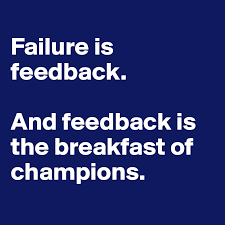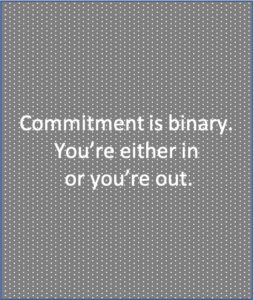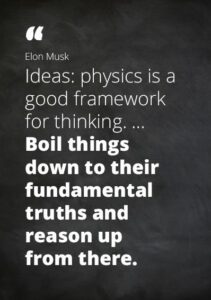The Machine that Builds the Machine
Summary Insight:
Building rockets is hard. Designing the machine that builds the rockets—the organization—is harder. This article reveals the first principles of scaling your business without blowing it up.
Key Takeaways:
- Vision without organizational design is a rocket with no guidance system.
- Every failure is a signal—trace it back to structure, process, or people.
- To scale, shift from building the product to building the system that builds the product.
There have been a lot of exciting developments in private space travel this month. Elon Musk, Jeff Bezos, and Richard Branson, through their respective companies, are all making consistent and visible progress towards developing space-based private enterprise. I’m sure that much of the social media world is rolling their eyes at “billionaires and their toys,” but regardless, it is amazing to witness what humans can accomplish over time when they have the commitment, vision, and resources to make it possible. Blue Origin’s motto, Gradatim Ferociter, meaning “step by step ferociously,” captures the spirit very well.
The picture above captures the spirit of progressive innovation. The image on the left is the Wright Brother’s flight at Kitty Hawk. The image on the right is Neil Armstrong’s moon walk. Without looking up the dates, if you had to guess, how much time would you say it took humanity to go from the first “airplane” flight to putting a man on the moon and returning him safely to earth?
….
Just 66 years! Totally bonkers, right? It leaves me wondering what the next 66 years will hold for humanity. In some areas we’ve made mind-boggling innovations and progress and in other areas, we seem stuck in the dark ages.
So my question to you, as a visionary entrepreneur yourself, is this: What’s your rocket? What’s the vision of your company and how will its success help to up-level the whole? And critically—because vision without execution is just a dream—are you currently organized to ensure that your business accomplishes its mission and without compromising its core values? And even more critically, as the leader, how are you thinking about the organizational design challenge as your company scales up?
To get a sense for what I mean, and how to think about this challenge, I’d like you to imagine that you are in the shoes (spaceboots?) of an Elon Musk, Jeff Bezos, or Richard Branson and you are attempting to launch and scale a space-based company. Now, this analogy may seem very far removed from your own business today, but just humor me. The challenges faced by every expansion-stage entrepreneur are fundamentally the same, regardless of the vision or business model. And the mindset used to solve these challenges successfully is also the same.
Launch Day
 It’s launch day. Out on the tarmac the rocket sits, gleaming in the morning sun, pointed towards the heavens, with its payload ready to blast into orbit. As the founder and CEO of Rockets R Us, you’ve got a lot riding on this. It’s your company’s inaugural commercial launch and you await the event with nervous anticipation. As the countdown clock commences, you can’t help but reflect on what it took to reach this point. The launch coordinator announces over your headset, “Lift off in T-minus… ” and with each tick of the clock—almost as if your life is flashing before your eyes—you reflect back over some key events during the past five years…
It’s launch day. Out on the tarmac the rocket sits, gleaming in the morning sun, pointed towards the heavens, with its payload ready to blast into orbit. As the founder and CEO of Rockets R Us, you’ve got a lot riding on this. It’s your company’s inaugural commercial launch and you await the event with nervous anticipation. As the countdown clock commences, you can’t help but reflect on what it took to reach this point. The launch coordinator announces over your headset, “Lift off in T-minus… ” and with each tick of the clock—almost as if your life is flashing before your eyes—you reflect back over some key events during the past five years…
“10” The original inspired (crazy?) vision… to reinvent space travel by building a reusable launch vehicle, one that would slash the costs and time of space travel and open up a whole new industry, maybe even a new space-based civilization.
“09” Those lean and terrible early years when everyone thought you were crazy—that it just couldn’t be done—and you risked your entire life savings to do it anyway. Screw it. No risk, no reward.
“08” The failed launches of the early prototype designs. Talk about a trial by fire! But those early discoveries through failure were what finally led to the breakthrough design perched on the tarmac today.
“07” The talent and camaraderie of your early team. Wow, what an amazing and talented group. You wouldn’t be here without them. But getting to this point has definitely left scars on everyone involved.
“06” The breakdowns and frustrations in trying to get the business past the prototype stage. The supreme hassles in passing government red tape and bureaucracy and the unforeseen contingencies and delays in the global supply chain. “My kingdom for a tungsten screw!”
“05” The loss of momentum through some bad senior hires and missed deadlines. “Geez,” you think to yourself, “how many more mistakes will it take me to remember to hire slowly and fire quickly?”
“04” The birth of your second child… you’ve been working so long and hard that you haven’t been able to spend nearly the amount of time you need with your family… is it worth it? You’re never sure. But with this first commercial launch under your belt, and with the pipeline of 15 other contracted deals in place for the next year, hopefully you’ll be able to back off this unsustainable pace and be more present at home.
“03” Through the video feed, you can’t help but admire your vision that’s come to life on the tarmac. It really is beautiful, isn’t it? You see how all the functions of the machine—the engines, nose cone, guidance system, parachutes—come together as a complete system. A tiny voice in your head reminds you that if it’s a good design, then every function will fulfill its purpose. Will it?
“02” You stop thinking and reminiscing. Your mind is totally present now, it’s the calm before the storm.
“01 and fire the engines,” you hear the launch technician say.
The engines fire, generating a colossal amount of fire, heat, exhaust, and earth-shaking rumbling. Slowly, the rocket begins to lift off… 1 meter, 3 meters, 10 meters… but then it becomes terrifyingly clear that something isn’t right. The rocket’s trajectory stalls, hovering for one second, two, then KABOOM!—a terrible, deafening explosion as the rocket implodes in a cloud of flame and smoke.
Failure is Feedback
 There’s a stunned silence within the mission control room and gasps of shock and awe from the launch viewing area. After a few moments that seem to stretch to an eternity, the launch coordinator’s voice comes back over the airwaves, “All launch personnel remain at your posts. Repeat. Remain at your posts. We have a launch failure. Stay tuned for further instructions.”
There’s a stunned silence within the mission control room and gasps of shock and awe from the launch viewing area. After a few moments that seem to stretch to an eternity, the launch coordinator’s voice comes back over the airwaves, “All launch personnel remain at your posts. Repeat. Remain at your posts. We have a launch failure. Stay tuned for further instructions.”
You sit in shock and can’t help but hold your hands to your head in dismay. A lifetime of work is suddenly up in smoke. It takes several minutes to process. Thankfully, word comes back that no one was physically injured. But now the other questions start to swirl in your mind.
What went wrong? Why? Are we out of business? What about our other contracts—will they pull out? How will we recover from this disaster? Everyone is looking to you for leadership but before you say anything, you need to gather your thoughts and pull yourself together…
Now several weeks have gone by since the disaster. Your team has analyzed the failure and attributed it to an outsourced engine valve. It just couldn’t withstand the pressure and the heat and this was the catalyst for such a dramatic failure. “Man, you think to yourself, “a billion-dollar rocket lost over a $500 valve. Mother @!)*#_+!”
As the cause becomes known, needless to say, your clients, board, investors, and the banks financing your vision of space exploration are not happy. The questions and comments you field from them are all variations on the same theme: “As the leader of this enterprise, how could you let such a careless error happen? If we’re going to continue to fund this (and we’re not saying that we are) what assurances can you give us that a disaster like this won’t happen again?”
You spend many sleepless nights trying to come to terms with everything. In the end, you realize that your passion and commitment for the vision hasn’t wavered. Strangely, your commitment even seems to grow. You think to yourself, “The world needs this. Now more than ever. This setback will only make us stronger in the end.”
The Unwavering Commitment
 Your unwavering commitment to the vision, as well as a thorough analysis by your team of what went wrong and why, begins to calm the nervous investors and clients. Everyone knew that this was a high-risk endeavor. Ultimately, you are able to convince your early-stage customers to continue the course and trust you. You negotiate a stay on interest payments and secure a bridge round to try the launch again with a new rocket.
Your unwavering commitment to the vision, as well as a thorough analysis by your team of what went wrong and why, begins to calm the nervous investors and clients. Everyone knew that this was a high-risk endeavor. Ultimately, you are able to convince your early-stage customers to continue the course and trust you. You negotiate a stay on interest payments and secure a bridge round to try the launch again with a new rocket.
But as the leader and CEO, you also need to make damn sure that problems like this don’t happen again. On the one hand, the problem seems as simple as getting a higher quality valve. On the other hand, you know that the problems in your organization likely run deeper and that the bad valve was a symptom, not the cause. So, what was the likely cause?
You run through a mental list of potential improvement areas to focus on…
The Internal Assessment
Do you have the right internal co-leader supporting you? You think so. Your COO, Gwen, is incredibly hard working, smart, and process-oriented. Her skills complement your own and you trust her implicitly. And complete trust like that is hard to replicate. This is a complicated business to manage and there’s only so much a single individual can do. Besides, as CEO, the buck stops with you, not with her.
However, it is also true that board has been haranguing you to hire a new President and COO, or at the very least, to promote Gwen into a full-fledged President and COO. While they don’t really care which option, they definitely want someone besides you owning all day-to-day operations, so you solely focus on vision, strategy, media, R&D, and key initiatives.
But you’ve been down the route of playing the “Mr. Outside” to a “Mr. or Mrs. Inside” before in one of your other companies and it failed spectacularly. In fact, it almost destroyed the company. In your experience, an Inside/Outside structure is a lot like a marriage. Its success depends almost entirely on the complementary skills, style, communication, and vision and values alignment between the two of you. While you trust Gwen, you’re not certain she’s really ready to head up all internal operations. The stakes are too high for failure. Besides, even the best marriages can reach a breaking point. There has to be a better way.
You keep scanning…
Do you have the right talent in the company? You think so. You’ve hired the best and the brightest for the jobs you needed to be performed and who were also a strong cultural fit. By any measure, the collection of highly talented PhD’s on the team would rival the most technically advanced organizations in the world. You’d put them up against any other company any day of the week.
However, it’s also become clear that as the complexity of the business has increased, the cross-functional teamwork and communication has gotten worse. You wouldn’t admit this to any outsider but there’s been a lot of conflict and finger-pointing occurring the last few quarters between engineering and manufacturing, sales and marketing, the cost-savings accountants and the R&D and business development sides. You’re sick of dealing with the conflict but you’re not sure yet what to do about it. Besides, is this conflict just a nuisance or a cause of catastrophic failure?
Do you have the right quality control process? It’s hard to say. One the one hand, you’ve followed best practices and of course have a QA director that reports to Gwen. On the other, you’ve been loath to slow things down with unnecessary bottlenecks. You’ve always had an innate fear (justified) that standards and procedures beget more standards and procedures. This industry needs more disruption and innovation—which is why you’re in the game—not more bureaucracy and red tape.
Was it just bad luck? Maybe. But who can afford bad luck like this? Besides, you need to do things better and smarter as an organization so that luck works for us, not against us.
As you struggle through identifying the root cause and potential solutions, it begins to dawn to you that your organization has become exceptional at designing rockets. There’s no argument about that. But as the company navigates from the early prototype stage into the full scale-it stage, you realize that being good at product design is no longer good enough.
Thinking Upward from First Principles
 Whatever the solution might be, it’s clear that as CEO you need to become exceptional at designing and leading an organization that consistently and profitably delivers payloads into orbit. Put another way, you need to shift your focus from just building machines to building-the-machine-that-builds-the-machine. And of course, this challenge in organizational design is not nearly as simple as rocket science.
Whatever the solution might be, it’s clear that as CEO you need to become exceptional at designing and leading an organization that consistently and profitably delivers payloads into orbit. Put another way, you need to shift your focus from just building machines to building-the-machine-that-builds-the-machine. And of course, this challenge in organizational design is not nearly as simple as rocket science.
Unlike a rocket that, once designed, is pretty static, designing an organization is a dynamic problem. It must be designed to evolve and adapt, much more like a living system than a mechanical machine. It must allow you to set the strategy and the pace and to adjust course while simultaneously delegating with the right level of visibility and control. But it must also ensure that you aren’t a bottleneck to execution or spending all of your time managing direct reports. The design must also support your existing entrepreneurial culture without sacrificing its core values that you’ve worked so hard to create and reinforce.
As you reflect on the challenges facing you and the organization, you find yourself naturally doing what you’ve done before when faced with a challenging technical problem. You start to wonder if there isn’t a set of underlying first principles that would help you understand and think upward from there. Could that be a unique and fruitful way of thinking through the organizational design challenge?
As you’ve taught your engineering staff repeatedly, working from first principles means to identifying and understanding what we know to be absolutely true and then building up the solution from there. This is how you’ve designed your ingenious rocket solutions. In fact, in the past, this is how you’ve always been successful in finding breakthrough solutions to every big technical challenge. Could you do the same for your organizational design?
You already know from experience that thinking from first principles takes more energy and effort than blindly copying what others have done before. It’s hard to do and takes tremendous effort, focus, and energy. However, you also know that if the underlying principles can first be understood and leveraged—then there’s usually an elegant solution hiding in plain sight. Often the solution goes against the status quo, giving you a competitive advantage too.
Thinking about the organizational design challenge in this way starts to get you excited. What if you could take the same way of thinking that you would apply to rocket design and apply it to organizational design? If so, then this challenge would actually be solidly in your wheelhouse. And even if you did decide to ultimately hire a new internal person so that you can focus more externally, there would be much greater understanding and alignment about why those decisions were made.
This insight clarifies your intention tremendously. You’re not going to solve this challenge by blindly copying a historical or popular approach to organizational design, or even what your board tells you should happen. Instead, you’re going to solve it in the same way you’ve solved every other big challenge in your career.
You’re going to start by identifying the first principles of organizational design and work upward from there with the goal to design an organization that thrives now and over time. Then you’re going to act to make it a reality.
Learn the First Principles of Organizational Structure & Design
There are indeed first principles of organizational structure and design. I’ve been teaching them for over a decade and they are proven to work in the real-world of scaling a business.
If you are building and scaling your own “rocket” and seek to unlock the potential of your team and strategic execution, I want to share these principles with you. Here are a few things you can do to learn from my experience with leaders like you:
- Watch Organizational Physics Tutorials (free)
- Join the Organizational Physics Membership Program (free)
- Read or listen to my book Organizational Physics
- Apply to the Strategic Execution Coaching Program. (Requirements are a business with $30M+ in ARR with a leadership team of 7+).
Good luck and see you out there!




